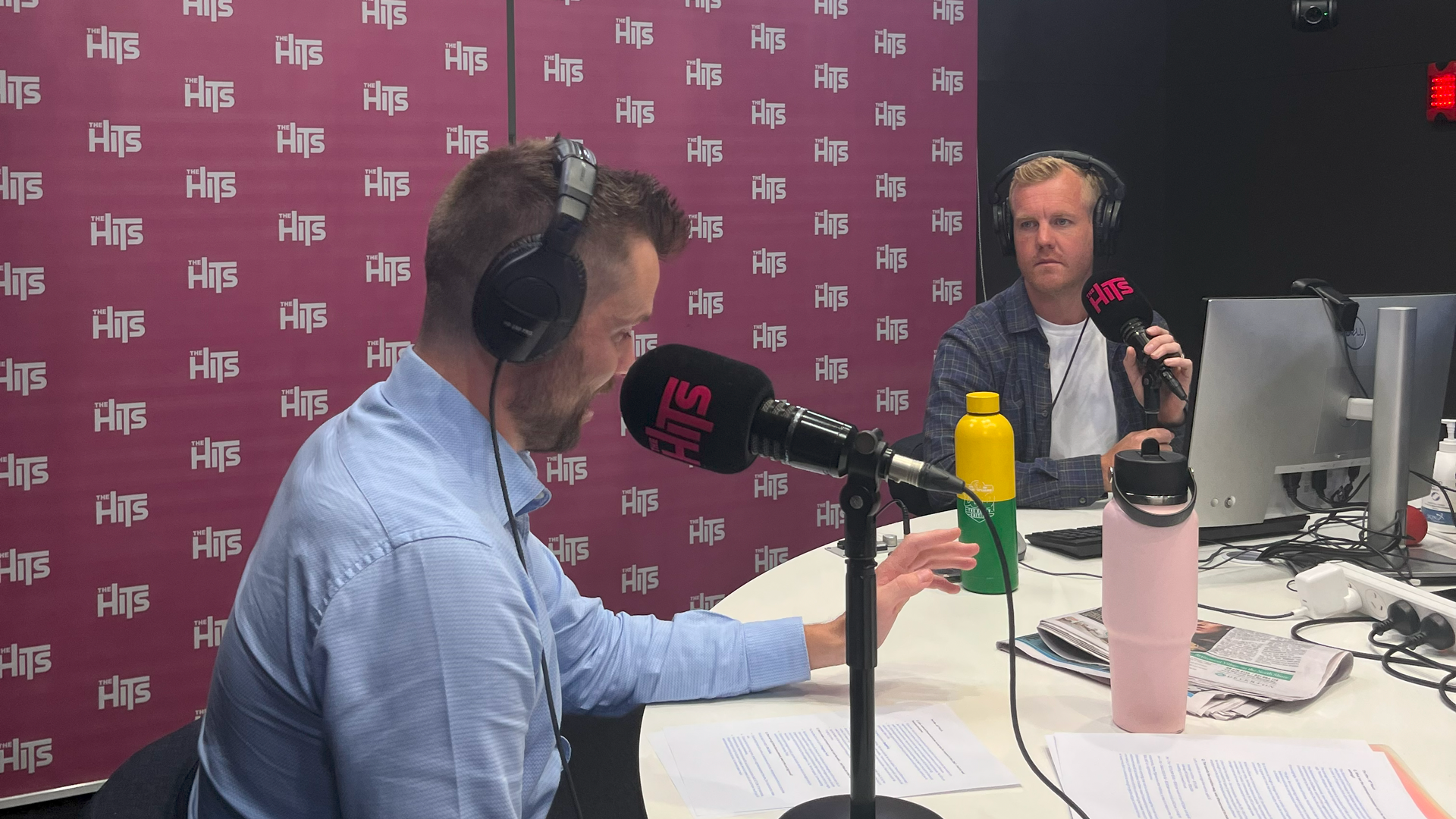Sluggish job growth, higher inflation, and consumer weakness are all playing a part in the current state of the US economy. What’s the outlook, and what does it mean for us here in New Zealand?
Listen.
Click here to download the MP3 file or listen to the podcast on your favourite platform:
Read.
Bridge talks Business: 9 September 2025
Episode Transcript
Ryan Bridge
Kia ora and welcome to episode 47 of Bridge Talks Business with Milford. As always, markets watched the US economy very closely. It’s a vital organ of the global economy. Our fortunes are all tied to its fortunes, and the latest job creation numbers have some nervous. The fed, like our Reserve Bank, is poised to step up to the plate with cuts to help out. Mark Riggall is our man in the hot seat today. His take, as always, is an interesting one. We’ll get to that shortly. First, here’s your top five business bits.
1. The jury’s out on America’s labour market slowdown, data last week revealing an ongoing cool down. But this also happened a year ago and then rebounded in the end of the year. History may repeat, but alarmingly, it’s now close to net negative job creation.
2. Healthcare was the only sector consistently growing jobs. Most others were shedding. Mind you, workers aren’t yet worried about job security, but if they are out of work, they’re finding it harder to get a job.
3. Unsurprisingly, the weaker labour market has prompted investors to reprice expectations of fed rate cuts. They’re now expected three times this year, a quarter point at each of their meetings.
4. Australia’s second quarter GDP was surprisingly strong there, showing the resilience of the Aussie economy. Why? Well, mainly stronger households – consumption up 2% year on year, rate cuts, plus, throw into that mix house prices still rising.
5. This week we look ahead. US inflation data – will we see signs that the tariff impacts are growing there? And we have retail card spending numbers out of New Zealand – are we hitting the shops? Markets looking for signs of life.
All right. Time is money, and no one likes wasting that. So, let’s crack into today’s episode. I’m going to be joined by Mark Riggall, Portfolio Manager at Milford. Mark knows what he’s talking about. We’ve had him on the show plenty of times before. Just a reminder, this segment is informational only and should not be considered financial advice.
Mark, welcome back.
Mark Riggall
Great to be here.
Ryan Bridge
Long time no see.
Mark Riggall
Yeah.
Ryan Bridge
In the meantime, we’ve had jobs numbers out of the US, and we talk about this a lot. We look at the jobs numbers because they’re a sign potentially of weakness in the economy. What did we see from the numbers on Friday?
Mark Riggall
Right. Well, let’s put it in context. The U.S. consumer is the strongest, biggest source of demand in the world. And so, when something upsets the U.S. consumer, we’ve all got to pay attention to it. So, the labour market clearly is important because if people are concerned about their jobs, then they’re not going to be consuming quite as strongly as they were. The numbers last week showed a pretty weak labour market in the US. You know, the number of job ads came in well below expectations, and revisions the prior month showed that actually, for the last four months on the trot, the job creation in the US has been quite low, right? Very close to zero, in fact, over that period. So that is something of a concern.
Ryan Bridge
And for the most recent month I was reading, they added roughly 22,000 jobs, but were estimated to add 75,000 jobs.
Mark Riggall
Yeah. You do get noisy numbers month to month, so you’ve got to kind of zoom out a little bit because these numbers do get revised. So, you’ve got to be careful about hanging out on one number in particular, which is why it’s good to look at the detail, look at the trend. The trend has been one of weaker job creation or job demand over the last few years, right. That’s from a position of very, very strong job demand back to a kind of more normal environment. And now we’re threatening to go actually below a normal environment where net job demand is below zero.
Ryan Bridge
So, a net negative result.
Mark Riggall
Yeah.
Ryan Bridge
Okay. So why? Is this because the economy, the consumer is weak in the US? Or is this more to do with tariffs and you know, companies maybe putting off decisions about hiring, that kind of thing?
Mark Riggall
Yeah, I mean it’d be great to kind of put a nice bow on a reason why. You know, one reason why that would be the case, but I think there’s multiple things going on, some of which you mentioned. Right. So, tariff uncertainty has been a big thing. Companies just don’t know what the environment is going to be like for selling going forward. Now that has started to resolve itself. We now know what tariffs are going to be. So that uncertainty is going away and business services surveys have improved as a result. And so that could have been weighing on hiring. We had a selloff in the stock market when company stock prices are going down, the CEOs are not so confident, and hiring might be impacted. Again, we’ve had a rebound now. So maybe that starts to go away. There might be some seasonality with it. We saw a slowdown in jobs market 12 months ago and then it rebounded into the end of the year. So, there’s reasons to be optimistic that actually some of this weakness can solve itself and we can rebound going forward. But we’re going to have to wait and see.
Ryan Bridge
Could that happen again? What happened last year that we you know, we have a dip, but it rebounds. Or is it actually worse now than what it was last year?
Mark Riggall
The speed of the slowdown’s roughly the same, but the problem now is that we’re much closer to zero than we were before.
Ryan Bridge
Right. Okay.
Mark Riggall
So, there’s that going on. And it’s not just about the demand for labour; it’s the supply of labour as well. So, 12 months ago there was a lot of supply of labour. Migration was really strong in the US, so the labour force was increasing. That meant the unemployment rate actually went up even though companies were hiring lots of people. This time around, companies are not hiring lots of people. But, you know, the immigration policy in the US is trying to actually deport people. And so, the pool of workers is actually stable or even shrinking, which means the unemployment rate is not moving that much, even though the demand for workers is slowing.
Ryan Bridge
What about inflation? I know we said in the Business Bits this morning that we’re going to get inflation number this week. Are you expecting it’s going to keep creeping up?
Mark Riggall
Yeah. Well, we’re looking for evidence that tariff policy is feeding through into inflation. Right. And feeding through into consumer prices. So, there is, you know, the margins, some evidence of that happening already. It’s expected to ramp up over the next few months as those tariffs now come into effect and companies start to try and pass through some of those costs through to prices that the consumers will see. So, we’ve got to watch for that. And that’s a positive for you know, an increasing inflation force. And then you go to all the other stuff which potentially is still slowing inflation. Will that slow enough to offset that increase from tariffs. So, there’s a bit going on.
Ryan Bridge
And then you’re sitting there as Jerome Powell, you know you’re sitting there as the fed, going okay so the jobs are coming off, and the market’s now expecting that they’ll do some cuts this year.
Mark Riggall
Yeah.
Ryan Bridge
But then how do you weigh that up, balance that up with what you’ve just said about inflation?
Mark Riggall
Well, I’ve got a dual mandate right. Full employment and a long-term inflation target. It looks like they will prioritize full employment. And concerns around weakness in the labour market will outweigh any concerns about inflation running too hot. They haven’t said transitory, right. They’ve kind of learned the lesson and not use that term. But effectively they think tariff inflation is transitory. In the same way that a VAT hike would be a transitory, you know, one off price rise. So, they’ll prioritize the labour market. And that means they’re likely to cut next week at their meeting. And the market expects them to cut two more times this year. In fact, the market expects them to cut close to 2.75% by the end of next year, which is roughly where they think neutral is i.e. removing all, tightness in interest rates from their policy settings.
Ryan Bridge
Wow. Does that mean Trump was right?
Mark Riggall
Well, there’s a lot of water to go under the bridge between now and the end of next year. But, you know, he’s been putting pressure on the on the fed and, you know, I think the fed will certainly feel that pressure. And so, interest rate cuts are likely to come through.
Ryan Bridge
So, what’s your read on the health of the economy, the US consumer and the US economy at the moment? You know, you mentioned the employment stuff. There’s the inflation. What’s your prognosis?
Mark Riggall
Yeah. Well, there’s lots going on. So, growth has stepped down this year. So, we were going gangbusters last year, economic growth in the US was like 2.5% to 3%. This year it’s kind of closer to 1%, maybe 1.5%. There’s still that uncertainty about what tariffs do to consumers. There’s some evidence that some consumers bought stuff now to stop paying higher prices in the next few months. So maybe there’s been some pull forward of demand. And so, we’re going to have to see if this kind of soft patch, you know, continues. If we look ahead a little bit, then we get some relief coming down the track. Interest rate cuts should help things, as we go forward. And then also there’s some fiscal policy which support households as we go through into 2026. So, the supports coming and the expectations are the economy will pick up again into next year. But there is this potential soft patch that we’re kind of dealing with right now.
Ryan Bridge
Gold. I’ve been checking out the price of gold lately, they’ve been doing not too badly, thank you very much.
Mark Riggall
Yeah, that’s right. So why is gold going up? It’s obviously shiny and people like accumulating shiny things. But the important thing for investors is that gold is a store of value. And what we’ve seen now in the US is that inflation has been above target for four years running, and we’ll be five years running if inflation plays out like it’s expected to. So, you kind of getting to the stage where you’re questioning the inflation fighting credibility of central banks. And that being the case, you want to own things that will benefit or hold their value when inflation is running hot. So, if the purchasing power of your currency is falling and what can I own as an asset, to kind of protect me against that, and gold falls squarely into that bracket. So, the fed cutting interest rates even though inflation is running hot, investors are going well, I just want to own stores of value like gold. So that’s why gold’s been rising. It’s gone sideways for four months from kind of April, but now it’s broken out of its range and started sort of rising again.
Ryan Bridge
Fascinating. You mentioned the central banks and their ability to actually tame inflation. How big of a problem is this? Because it’s something that I sort of heard around the traps. You know – it’s taken too long, they don’t actually know what they’re doing, or they’ve gone too hard, or they’ve gone too soft, or both. Is this going to be a bigger problem going forward for central banks?
Mark Riggall
Yeah, I think we’re in a world where inflation is going to run a bit hotter than where it was. So, for the 20 tens, we’re in a world where inflation was running below target and central banks did everything they could to try and get inflation back, you know, to target. And now we’re in a world where supply shocks, which includes things like immigration, is causing inflation to rise. We’re not talking about the 1970s. We’re talking about inflation running just a little bit above central bank targets, which range from between 2% and 3% depending on where you are. So, inflation running at 2.5% to 3.5% is a hotter inflationary environment. But if you compound that over a number of years, then actually it becomes a problem. So, it’s a little bit hotter year on year but, you know, over a long period, then that’s an inflationary environment. And that’s the one we’re likely in going forward because central banks will prioritize protecting growth and weakness in labour markets over trying to fight inflation. So, it is a bit of a different investing environment for us to think about.
Ryan Bridge
Which means that interest rates will continue to be cut, which we’re seeing here, and we will soon see happen in the US. What does that mean for stocks? They’ve been rising recently, we know they like a rate cut coming. Will we see more increases? Will it just keep going up?
Mark Riggall
Yeah. I mean stocks have enjoyed a really, really strong run. I mean they obviously had a wobble in April around tariffs. And now they’ve kind of erased all of that loss and kind of back to all-time highs. Inflation going up is not necessarily a bad thing for stocks right, if central banks aren’t going to do anything about it. So, if growth and inflation is running hot, then that’s actually not a bad thing for stocks. That said, they’re quite expensive stocks at the moment. So, it’s hard to pound the table too hard on it. And September does tend to have its volatility, as we’ve seen in previous years. So, you’ve always got to be alert for these things. But you know, the outlook for, for shares in general, especially if growth improves into next year, is not too bad at all.
Ryan Bridge
For those who are watching or listening to this podcast thinking, oh, it’s America, I don’t really care what, what does it mean for us?
Mark Riggall
Yeah, well, I mean, for KiwiSaver, clearly, you know, much of the investments are in are in US companies because they’re huge companies that are domiciled in the US. But a global in nature. So, you’re getting access to global, the global economy via U.S shares. Right. And what happens to U.S shares matters and will be, you know, determined partly by what happens to the US economy. So that’s why you know, matters for KiwiSaver investors. But also, you know what the Federal Reserve that does impact what central banks elsewhere do. So, if the Federal Reserve is cutting interest rates, then that actually enables other central banks like the RBNZ to keep cutting. Right. Because otherwise that be concerned about currency impacts. But if the US central bank’s cutting then it allows New Zealand to cut without the New Zealand dollar falling too far. So, it does enable cutting cycles to continue in places like New Zealand. So that’s important as well.
Ryan Bridge
Fascinating as always. Mark, great to have you on the podcast. Thank you.
Mark Riggall
Great to be here. Thanks very much.
Ryan Bridge
That was Mark Riggall, Portfolio Manager at Milford, talking to us there about the US economy, about the job creation or lack thereof that’s happening over there at the moment, what it means for us and what it means for our KiwiSavers, most importantly. We’ll be back next week with a brand-new episode. Don’t forget you can like, follow and subscribe us wherever you like to do that. We love you doing so. Until next week, go invest in yourselves.
Missed previous episode? Don’t worry! Click here to catch up now.


